UNIQUE ARCHITECTURE
The Ba Mountain Range in Gia Lai Province (formerly Phu Cat District, Binh Dinh) stands out with 66 majestic mountains. Among this group, Hon Chuong (De Gi Commune) attracts attention with its giant cylindrical rock, towering like an upside-down bell in the sky. More special than all, on top of this rock about 50 m high, there exists a mysterious ancient brick architecture, whose function has not yet been explained.
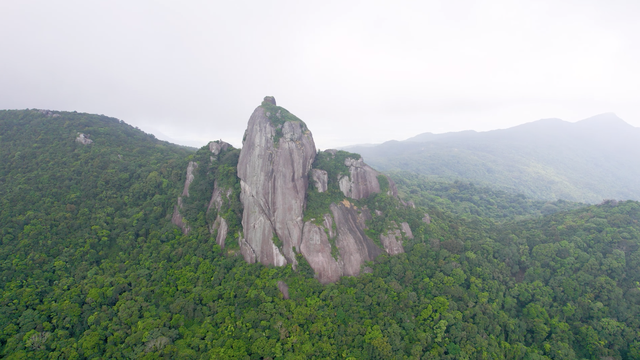
Hon Chuong Tower is located in the middle of the majestic Ba Mountain complex.
PHOTO: TRIEU THANH
The relic is called Hon Chuong Tower. From the remaining traces of broken bricks and tiles, researchers confirmed that this is a work of ancient Cham people. According to Gia Lai Provincial Museum, Hon Chuong Tower is considered the highest Cham tower in Vietnam, located at an altitude of about 800 m above sea level.
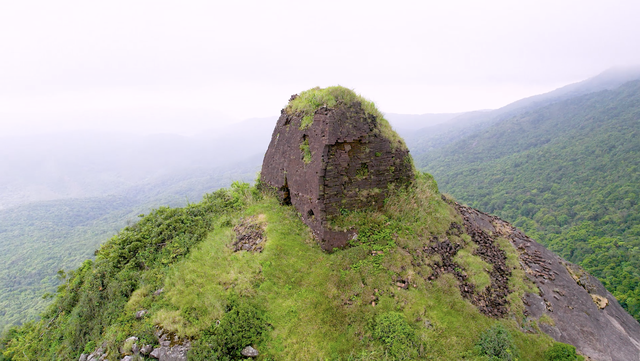
Hon Chuong Tower
PHOTO: TRIEU THANH
The tower is about 7 meters high, each side is 8.5 meters long, the body is square and straight, gradually tapering to the top. Unlike many elaborate Champa towers, the body of Hon Chuong tower has absolutely no patterns, an unusual difference.
Hon Chuong Tower is about 20 km northeast of the capital Vijaya (also known as Do Ban citadel, during the Tay Son period it was called Hoang De citadel) of the Champa kingdom. From the tower's location, one can have a panoramic view of the entire ancient Vijaya region (today's eastern Gia Lai province). To the east is De Gi lagoon connecting to Thi Nai lagoon, further away is the foot of the Truong Son mountain range. To the west and the north-south directions open up the La Tinh river delta and the Kon river delta.
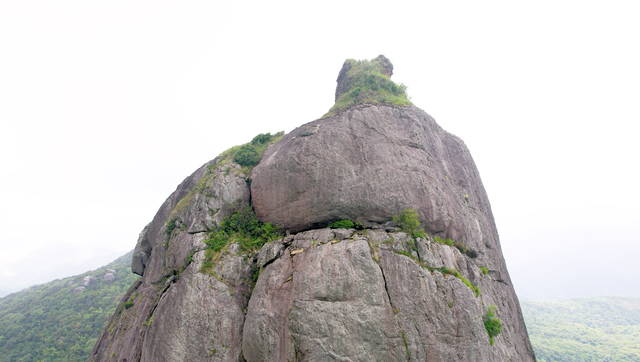
The construction method and function of Hon Chuong tower are big questions for scientists.
PHOTO: TRIEU THANH
Surprisingly, for many centuries, this tower was almost "invisible" in research documents. In 1993, during a survey trip to Ba Mountain, Dr. Dinh Ba Hoa, former Director of Binh Dinh Museum (old), accidentally discovered and named the tower after the shape of the rock where it is located.
"The road up is dangerous and inaccessible, and can only be observed with binoculars. Local people once thought this was a Nguyen Dynasty temple because of its tiled roof. But the architecture shows that this is a Cham tower," Dr. Dinh Ba Hoa recalled.
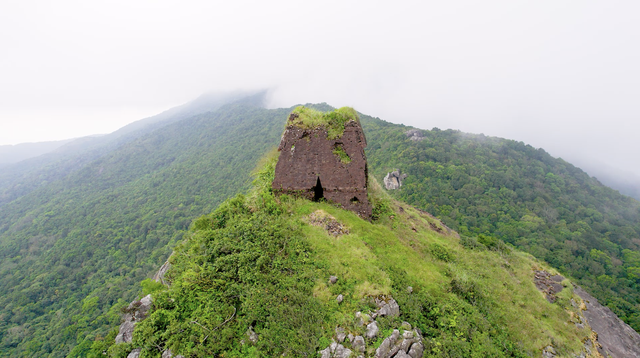
The main door of Hon Chuong tower faces east like other Cham towers in Gia Lai.
PHOTO: TRIEU THANH
It was not until 2020 that the Binh Dinh Provincial Museum established an official survey team, using a flycam to record. The images showed that the tower only had one door facing east, the tiled roof had collapsed but the tower body was intact.
What makes scientists wonder is why the Cham people chose a steep, dangerous location to build the tower, different from the tradition of building towers in flat, convenient places.
PILGRIMAGE PLACE OR MILITARY OBSERVATION POST?
Dr. Dinh Ba Hoa believes that due to its difficult terrain, the tower is unlikely to be a place for pilgrimage or regular religious activities. According to him, this structure may have once been a military observatory. However, how the ancients brought materials to the top of the rock remains unexplained.
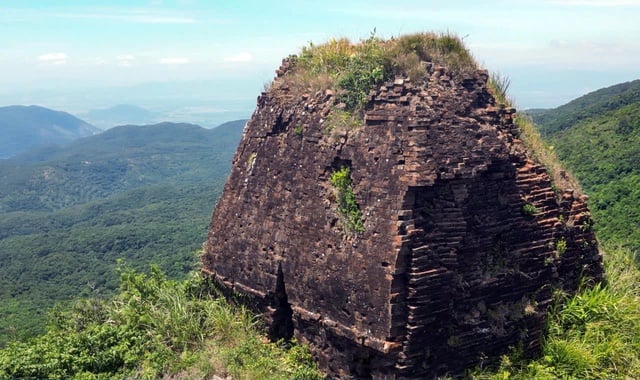
According to scientists, Hon Chuong tower was probably built between the 11th and 13th centuries.
PHOTO: XUAN HIEN
On the contrary, Mr. Hoang Nhu Khoa (Gia Lai Provincial Museum) believes that Hon Chuong tower has a religious symbolism. In Champa culture, mountains are often considered the residence of gods. From afar, Hon Chuong looks like a giant linga, a fertility symbol in Hinduism. Building a tower there shows a unique combination of indigenous beliefs and Hinduism. "With a location often covered by clouds, the tower hardly has a military function. It can only be a spiritual symbol," Mr. Khoa commented.
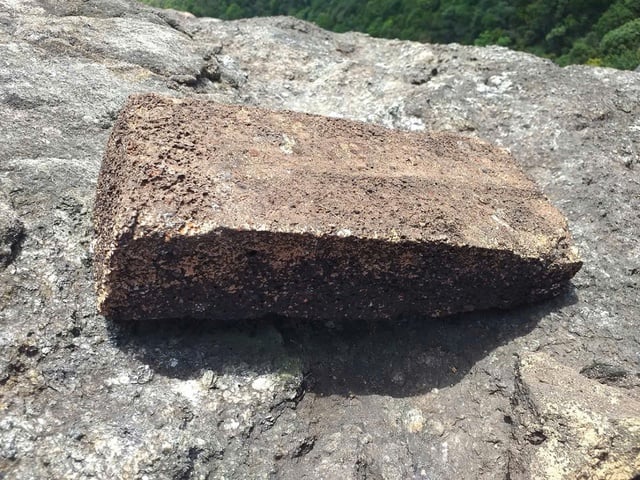
Hon Chuong Tower is built from giant bricks, weighing about 6 kg each.
PHOTO: XUAN HIEN
Dr. Nguyen Huu Manh, Deputy Head of the History Department of the University of Social Sciences and Humanities, Vietnam National University, Hanoi, added another hypothesis, Hon Chuong Tower may have once functioned as an ancient lighthouse, marking the seaport for ships to dock, or serving defense purposes. Based on the found ox horn tiles, he believes the tower dates between the 11th and 13th centuries.
According to Dr. Manh, the ancient Cham people may have used bamboo and wooden scaffolding and a pulley system to bring bricks and stones to the top of the giant rock, building this strange structure.
To this day, the Hon Chuong Tower remains one of the most mysterious structures of the Champa Kingdom in Gia Lai. Its unique nature makes the surrounding hypotheses both attractive and suggestive for many future studies.
Ms. Do Thi Dieu Hanh, Director of the Department of Culture, Sports and Tourism of Gia Lai province, said that Hon Chuong tower has great historical and cultural value, but currently, access to the relic is still extremely difficult. "In the plan to supplement funding for the period 2026 - 2030, the industry will prioritize the restoration of the remaining Cham towers, including Hon Chuong tower. This will be an opportunity to restore the work, while preserving the Cham architectural value for future generations," Ms. Hanh affirmed.
Source: https://thanhnien.vn/thap-chamky-latren-dinh-da-khong-lo-185251004202719889.htm


![[Photo] Prime Minister Pham Minh Chinh chairs the Government's online conference with localities](https://vphoto.vietnam.vn/thumb/1200x675/vietnam/resource/IMAGE/2025/10/5/264793cfb4404c63a701d235ff43e1bd)


![[Photo] Prime Minister Pham Minh Chinh launched a peak emulation campaign to achieve achievements in celebration of the 14th National Party Congress](https://vphoto.vietnam.vn/thumb/1200x675/vietnam/resource/IMAGE/2025/10/5/8869ec5cdbc740f58fbf2ae73f065076)


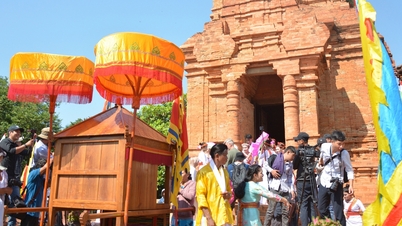

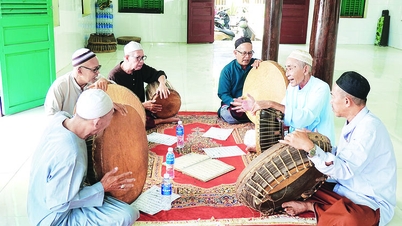

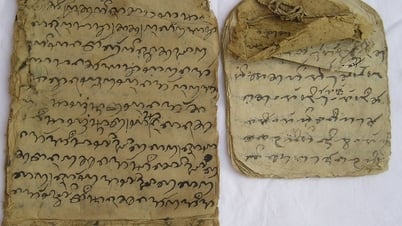
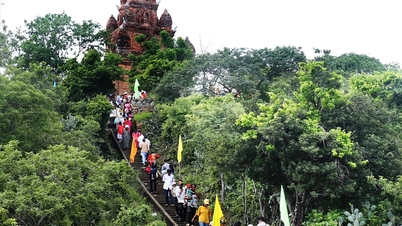

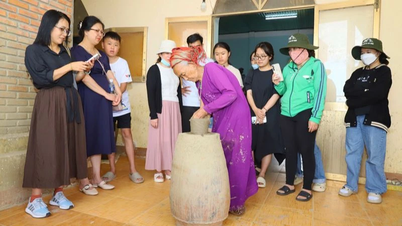



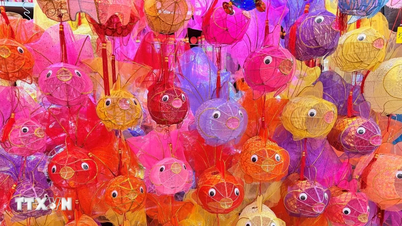



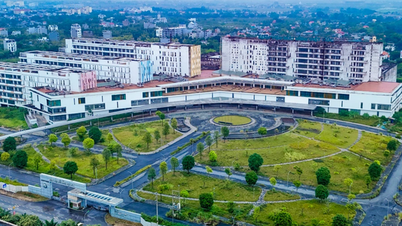

![[Video] Jelly Mooncakes: New Colors for the Mid-Autumn Festival](https://vphoto.vietnam.vn/thumb/402x226/vietnam/resource/IMAGE/2025/10/5/abb1d390ee7f452b9110fca494ba0d77)
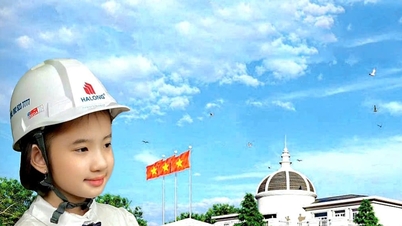

![[Video] Traditional moon cakes attract customers](https://vphoto.vietnam.vn/thumb/402x226/vietnam/resource/IMAGE/2025/10/5/0a98992e8c92419fa9ea507de23e365d)




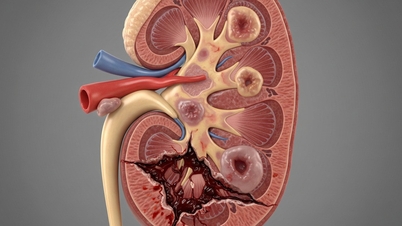


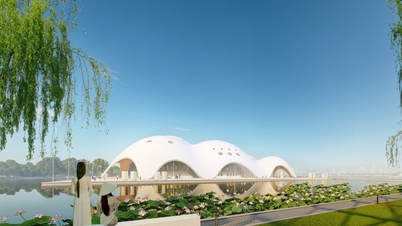
























![[VIDEO] Summary of Petrovietnam's 50th Anniversary Ceremony](https://vphoto.vietnam.vn/thumb/402x226/vietnam/resource/IMAGE/2025/10/4/abe133bdb8114793a16d4fe3e5bd0f12)

![[VIDEO] GENERAL SECRETARY TO LAM AWARDS PETROVIETNAM 8 GOLDEN WORDS: "PIONEER - EXCELLENT - SUSTAINABLE - GLOBAL"](https://vphoto.vietnam.vn/thumb/402x226/vietnam/resource/IMAGE/2025/7/23/c2fdb48863e846cfa9fb8e6ea9cf44e7)
















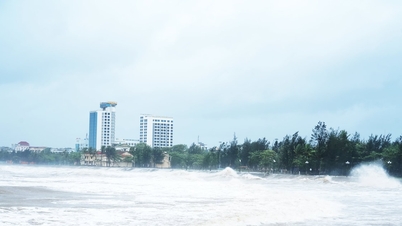




















Comment (0)